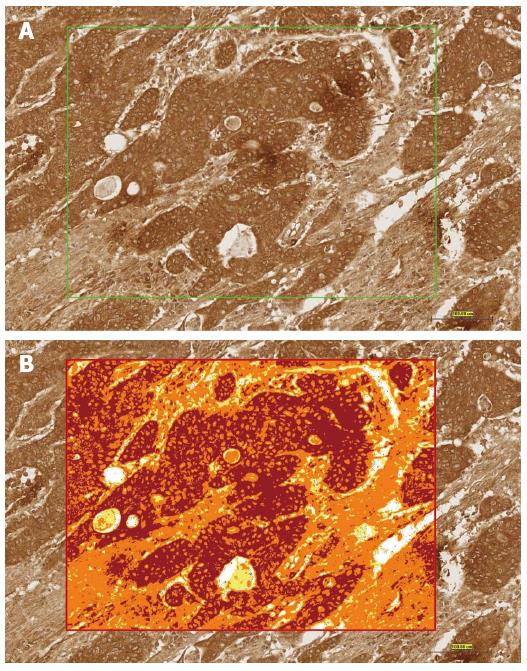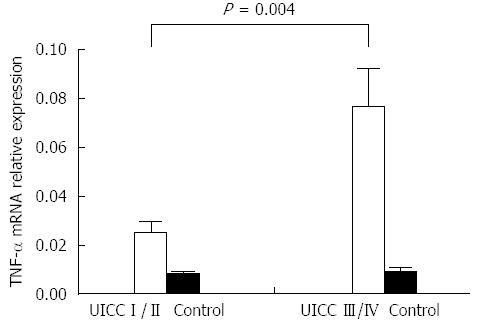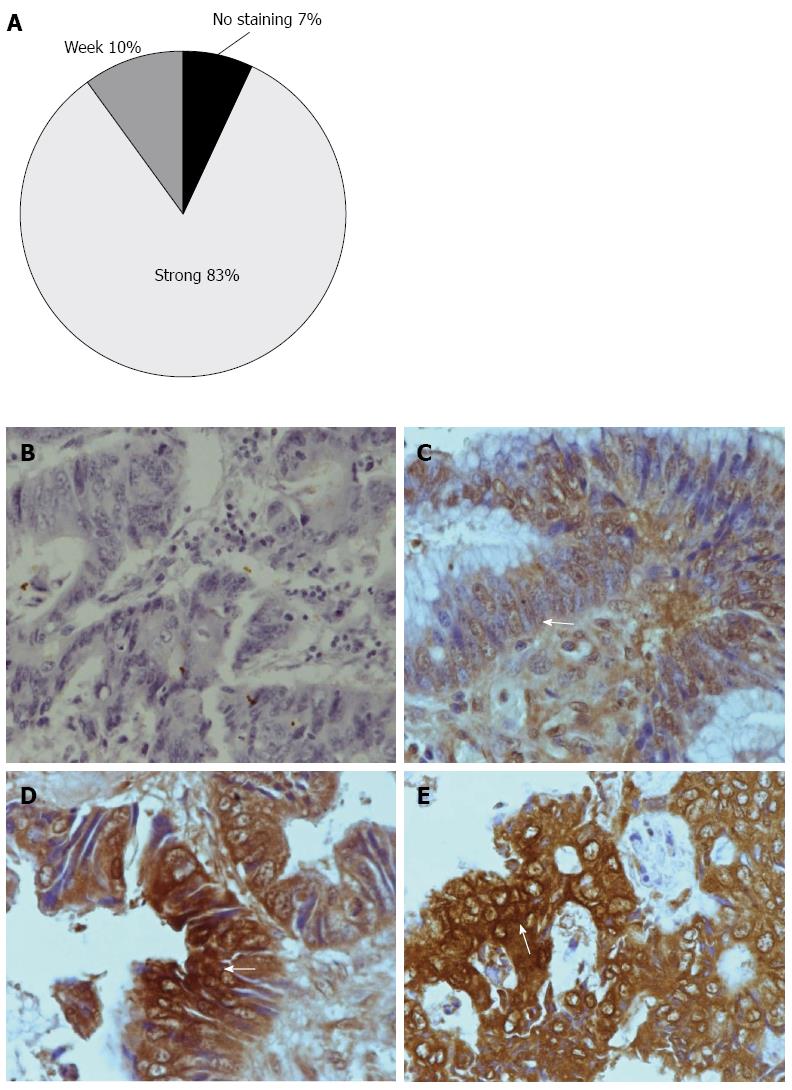Copyright
©2014 Baishideng Publishing Group Inc.
World J Gastroenterol. Dec 28, 2014; 20(48): 18390-18396
Published online Dec 28, 2014. doi: 10.3748/wjg.v20.i48.18390
Published online Dec 28, 2014. doi: 10.3748/wjg.v20.i48.18390
Figure 1 Image analysis of immunohistochemistry.
Representative images showing how image analysis was performed on cores immunostained for tumor necrosis factor-α. A: A square field is selected; B: A color markup overlay produced by the color deconvolution algorithm reflecting the intensity ranges of the Diaminobenzedine (brown) stain; blue, negative; yellow, weak positive; orange, medium positive; red, strong positive. Scale bar = 100 mm.
Figure 2 Tumor necrosis factor-α gene expression in colorectal cancer by real time polymerase chain reaction.
Tumor necrosis factor-α (TNF-α) gene expression shows a statistically significant difference expression between advanced and early stages of colorectal cancer (P = 0.004).
Figure 3 Semi-quantitative evaluation of tumor necrosis factor-α protein expression.
A: Percentage of samples showing no staining, weak or strong immunohistochemistry staining; B, D and E: Representative microscopic images of tumor necrosis factor-α (TNF-α) immunohistochemical expression of by tumor cells (cytoplasmic staining pattern, is pointed by arrow; B: No staining in normal colon mucosa; C: Weak; D-E: Strong cytoplasmic staining. TNF-α expression is increased in basal tumor cells. In advanced stage tumor TNF-α expression was strong D-E (magnification, × 400).
- Citation: Obeed OAA, Alkhayal KA, Sheikh AA, Zubaidi AM, Vaali-Mohammed MA, Boushey R, Mckerrow JH, Abdulla MH. Increased expression of tumor necrosis factor-α is associated with advanced colorectal cancer stages. World J Gastroenterol 2014; 20(48): 18390-18396
- URL: https://www.wjgnet.com/1007-9327/full/v20/i48/18390.htm
- DOI: https://dx.doi.org/10.3748/wjg.v20.i48.18390















